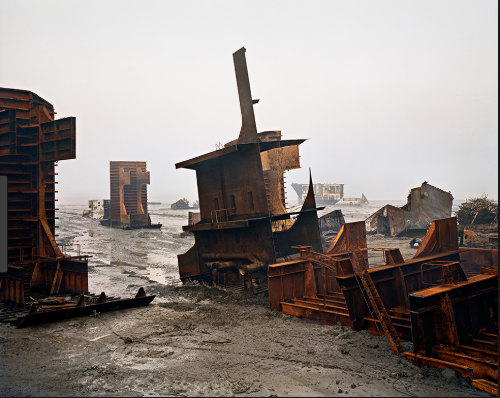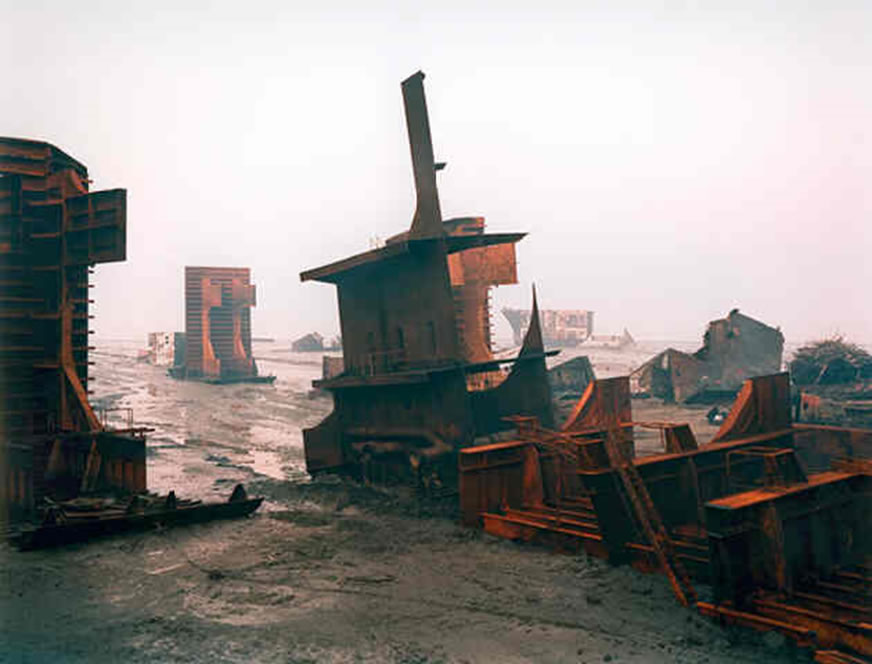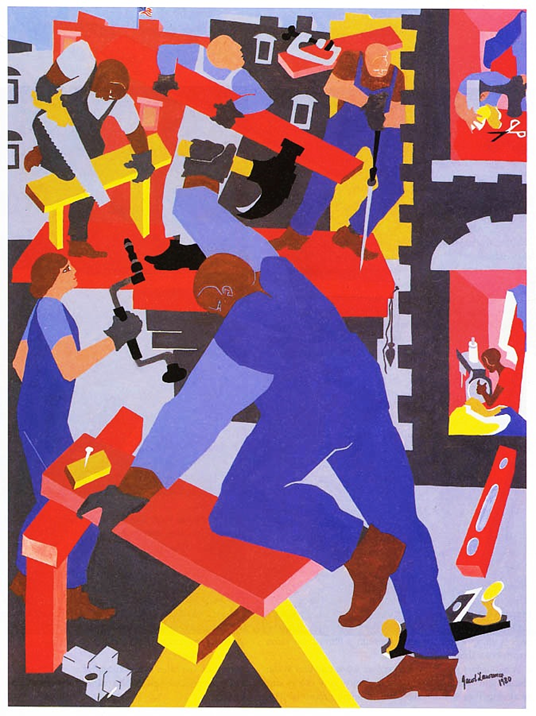Emphasis & Unity Analysis II
turn in by email to: gclayton@harding.edu
(2DC12e Analysis2 Set_StCritF11 )
The works:
p. 133 Georges de la Tour—The Fortune Teller ( img alt | Image/Info | Project ) Varied de la Tour paintings
p. 250-251 273C Edward Burtynsky, Shipbreaking #10 (img | site | img ) Varied Projects | Shipbreaking Project
p. 200C Jacob Lawrence, Cabinet Makers (| img ) (bio ) Varied Projects |
— For each image, describe:
a) at least three focal areas and
b) the tactics and forms that create those focal area.
c) traits and forms that unify the composition.
Respond to the assigned questions, below. Further notes are beneath each heading.
Which parts of the image/design draw your attention?
Which areas are graphically prominent and "emphatic"?
Begin by simply looking at the design.
Now notice what you noticed — what parts of the design drew your attention?
Usually there will be one region that is most prominent — the major focal area.
There will often also be several minor focal areas — areas of interest, but not so prominent or complex as the major focal area.
Many designs are composed to help guide the viewer's eye from one focal area to the next along a "graphic hierarchy" using some sort of a pathway or "eye path".
Be specific.
Why do areas that have graphic emphasis, have it?
Consider the various factors that contribute to graphic emphasis.
See how many of these conditions have been used to graphically empower the design's focal areas.
Heightened contrast.
— partiicularly heightend value contrast. Where are the areas with the most range of value?
— contrast of color
— contrast of size
— contrast of shape.... frankly anything that differs from the general, dominating traits. (see Anomaly, below)Anomaly
Has the designer established dominant traits — a color that is used a lot? ...a texture that is reused? ...a shape or a kind of line that recurs?
How are the focal areas different from those dominant traits?
Is there some patterrn or arrangment that has been used in most of the design? Does the focal area break that arrangement?Position
— central location?
— features lying along the "rule of thirds" lines, or their intersections?Isolation
— Is the focal area surrounded by empty space...by a simple background or background with a very subdued pattern?Framing
— Are there shapes that "wrap" or enclose the focal area — sort of like a picture frame wrapping a picture?
— ...or concentric circles wrapping around a bullseye?Directional Cues:
— Are there lines or edges that lead toward, or intersect, the focal area? Are there lines or "rays" that radiate from the focal area?
— Are there directional shapes that point toward the focal area?
— Are there progressions or gradients that move toward the focal areas?Well-developed relief areas
— Are non-focal areas subdued?
— Has the artist reduced contrast or pattern or color or variety elsewhere?
Repetition
Look for elements and traits that repeatedly appear, or are similar -- a theme-and-variation tactic.
Look for dominating traits -- what color(s) are prevalent or dominant? What tone or value is dominant?
Does one element dominated?
What element, if any, is most "active" -- shape, line, color, texture?
Often artists and designers focus on the "language" of one or two elements in a work.
Are forms massed, grouped or clusted into compact areas, leaving ample negative space?
Is Space/Depth compressed or flattened?
Is the image flattened to 2D features -- without any sense of depth or distance? Is the work a very shallow and compressed space?
What kind of organization is used?
A Grid? Row and/or columns? Formal symmetry? Radial symmetry? Is the picture plane, or space, divided into clear regions or neighborhoods, each with their own distinctive traits?



p.
Jacob Lawrence, (1917 - 2000) American
The Builders — 1980; gouache on paper; 34 x 25 1/2 in.; Collection of Safeco Corporation, Seattle
(from a series of paintings and prints Lawrence created honoring labor and laborers.)
